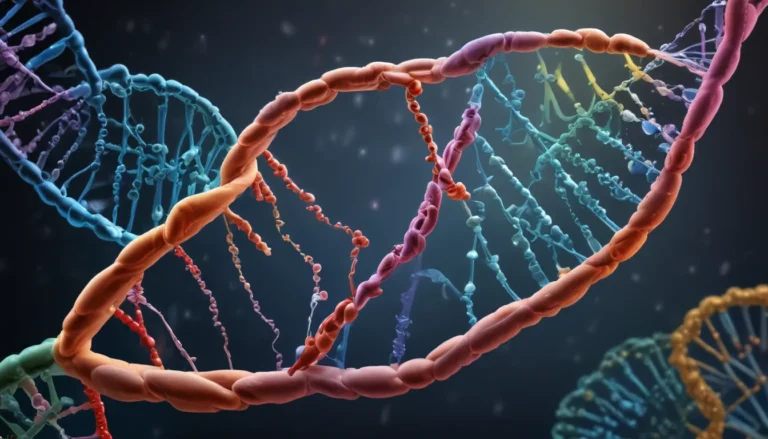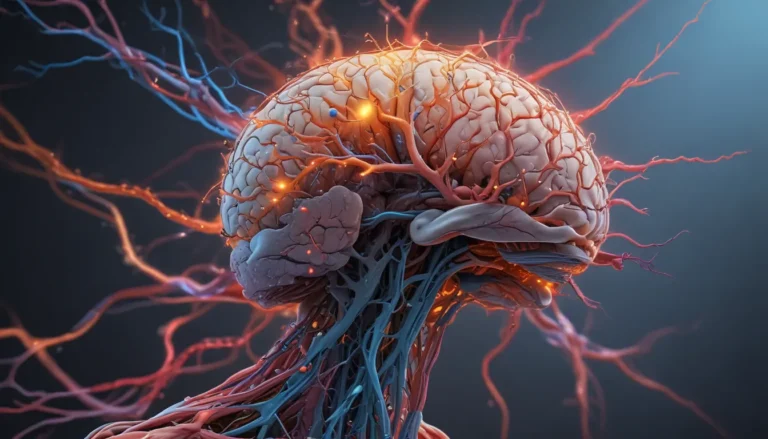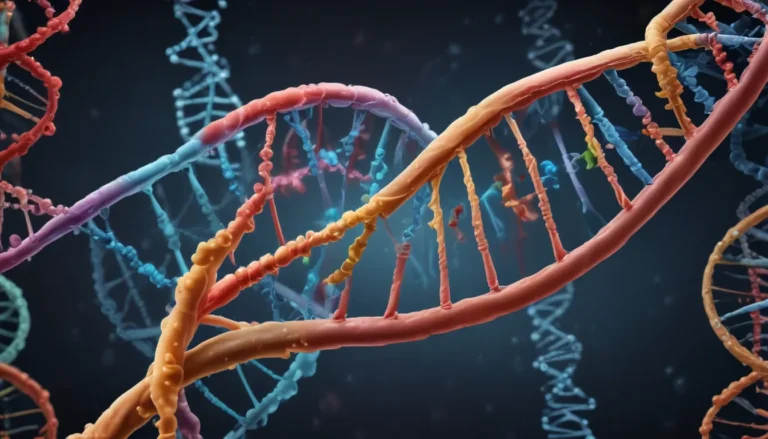A Note About Images: The images used in our articles are for illustration purposes only and may not exactly match the content. They are meant to engage readers, but the text should be relied upon for accurate information.
In the realm of genetics, few subjects captivate researchers and enthusiasts alike quite like Hox genes. These remarkable genes act as the architects of life, orchestrating the development of organisms and ensuring that structures form in the right places at the right times. From their crucial role in body plan determination to their potential implications in human diseases, Hox genes have stimulated intense research in the fields of evolutionary biology and developmental genetics. In this enlightening article, we will delve into 17 fascinating facts about Hox genes that will provide you with a deeper understanding of their significance and the profound ways in which they shape the diversity of life on Earth.
Unveiling the Enigma of Hox Genes
1. The Discovery of Hox Genes
In the 1980s, scientists studying fruit flies made a groundbreaking discovery: the existence of Hox genes. These genes, named after the homeotic phenotypes they produce, have since sparked a wealth of research into their intricate functions and evolutionary significance.
2. Evolutionary Conservation of Hox Genes
One of the most intriguing aspects of Hox genes is their high degree of conservation across evolutionary time. These genes maintain the same order and arrangement in a wide range of species, highlighting their fundamental role in biological development.
3. Decoding the Homeobox Sequence
At the core of Hox genes lies a specific DNA sequence known as the homeobox. This sequence is responsible for the regulatory functions of Hox genes, guiding the intricate processes of embryonic development.
4. Shaping the Body Plan
Hox genes serve as the master regulators of an organism’s body plan during embryonic development. By providing instructions for proper structural formation, these genes play a pivotal role in shaping the overall anatomy of organisms.
5. The Intriguing Hox Cluster
Organized in a cluster on the chromosome, Hox genes exhibit a remarkable order that corresponds to their expression along the body axis. This unique arrangement ensures precise spatial and temporal regulation of gene activity.
6. Guidance Along the Anterior-Posterior Axis
Hox genes provide essential instructions for the development of structures along the anterior-posterior axis of an organism. Through their regulatory functions, they contribute to the proper alignment and differentiation of body segments.
7. The Symphony of Developmental Timing
During embryonic development, Hox genes are expressed in a sequential manner, with distinct genes activated at different stages. This orchestrated expression pattern ensures the coordinated growth and differentiation of cells.
Diving Deeper into the World of Hox Genes
8. Orchestrating Limb Development
In vertebrates, Hox genes play a crucial role in the development of limbs, guiding the intricate processes of limb formation. By directing the growth and patterning of tissues, these genes contribute to the diversity of limb structures.
9. Unraveling Mutations and Developmental Disorders
Mutations in Hox genes can lead to developmental disorders and abnormal body patterning in organisms. These genetic alterations can disrupt the precise regulatory mechanisms of Hox genes, affecting the overall development of organisms.
10. Unlocking Cell Reprogramming
By manipulating the activity of certain Hox genes, scientists have the ability to reprogram cells, transforming one cell type into another. This groundbreaking technology offers insights into the plasticity and versatility of cellular functions.
11. Exploring the Link to Cancer
Abnormal regulation of Hox genes has been associated with the development and progression of certain types of cancer. The intricate interplay between Hox genes and cellular processes underscores their potential implications in disease mechanisms.
12. Unraveling Complex Gene Regulation
The expression of Hox genes is governed by a complex network of transcription factors and signaling pathways. This intricate regulatory system ensures precise control over gene activity, influencing the diverse functions of Hox genes.
13. Embracing the Diversity of Multiple Paralogs
Many Hox genes exist as paralogs, duplicated genes with similar functions that have emerged through evolution. These paralogous genes contribute to the robustness and flexibility of Hox gene functions across species.
14. Patterning the Body Segments
Hox genes play a pivotal role in the patterning of body segments, ensuring that structures form in the correct locations. Through their regulatory functions, these genes establish the spatial organization of body parts during development.
15. Unveiling Hox Genes in Plants
While initially discovered in animals, Hox genes have also been identified in plants, where they contribute to the development of plant structures. This cross-kingdom conservation underscores the fundamental role of Hox genes in biological processes.
16. Embracing Regeneration with Hox Genes
Hox genes are involved in the process of regeneration in many organisms, allowing them to regrow lost body parts. By coordinating cellular responses and tissue regeneration, Hox genes play a crucial role in the remarkable ability of organisms to recover from injuries.
17. Reflecting on Hox Genes and Evolution
The presence and conservation of Hox genes across species provide compelling evidence for the role of gene regulation in evolutionary processes. Through their intricate functions and shared characteristics, Hox genes offer valuable insights into the mechanisms driving biological diversity and adaptation.
Unlocking the Potential of Hox Genes: A Journey of Discovery
In conclusion, Hox genes stand as a testament to the remarkable intricacies of biological development and evolution. Through their regulatory prowess and transformative capabilities, these genes shape the complex forms of life we witness on Earth. By unraveling the mysteries of Hox genes, researchers continue to gain valuable insights into the mechanisms governing embryonic development and the evolutionary trajectories of species. As we journey further into the world of Hox genes, we anticipate new discoveries that will broaden our understanding of the diverse array of life forms that inhabit our planet.
Frequently Asked Questions
- What are Hox genes?
-
Hox genes are a group of genes that play a fundamental role in the development and patterning of organisms. They regulate the growth and differentiation of cells, ensuring proper structural formation.
-
Are Hox genes only found in humans?
-
No, Hox genes are widespread across various organisms, including animals and some plants. Their high degree of conservation throughout evolution highlights their essential functions in biological processes.
-
How do Hox genes specify body segmentation?
-
Hox genes are arranged in clusters and activated in a specific order along the body axis during embryonic development. This sequential activation determines the identity of body segments, contributing to a well-organized body plan.
-
Can changes in Hox genes lead to developmental abnormalities?
-
Yes, alterations in Hox gene expression or mutations in the genes themselves can result in developmental abnormalities. These disruptions can range from mispositioned body parts to severe conditions affecting the overall body plan.
-
How do scientists study Hox genes?
- Scientists employ various techniques, such as genetic manipulation, transgenic experiments, and comparative genomics, to study Hox genes. These methodologies enable researchers to investigate gene function and regulation in different organisms, shedding light on their evolutionary significance.
Hox genes represent just one facet of the captivating world of genetics and biology. As we unravel the mysteries of these genes, we gain valuable insights into the complexities of life’s development and evolution. Each discovery opens new pathways for exploration and understanding, inviting us to embark on an enlightening journey through the wonders of genetic programming and biological diversity. Join us as we delve deeper into the realm of Hox genes, uncovering the secrets that shape life in its myriad forms.
Pave the Way for Discovery with Hox Genes
Our commitment to delivering credible and engaging content is unwavering. Each fact shared on our platform is contributed by real users, ensuring a diverse range of insights and information. Our dedicated editors meticulously review each submission to uphold the highest standards of accuracy and authenticity. Trust in our mission to provide you with trustworthy and captivating content as you explore the fascinating world of genetics and biology.






